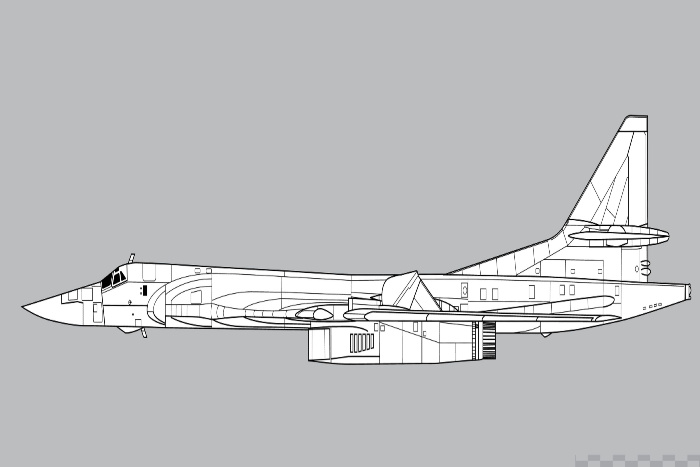The ‘sweep’ of a plane refers to the design of its wings. The wings of a plane are said to be swept if they angle forward, or more typically, backward from the base of the plane. This is the typical form that you’ll find on a commercial aircraft. Of course, they don’t have to be angled this way; there are planes that have wings with no sweep, or a sweep angled forward instead of backward. It all largely depends on how you want the plane to behave while flying.
Key Takeaways
- Sweep on a plane refers to the design of its wings, and it can be angled forward or backward to achieve different flight characteristics.
- Back-swept wings are commonly used in passenger aircraft to reduce turbulence, increase stability and efficiency, and modify the center of gravity of the plane.
- The history of swept wings dates back to the early 1900s, and it was refined during World War 1 and 2 for military aircraft. By the 1960s, most commercial aircraft had adopted the swept-wing design.
- Sweep wings can introduce certain deficiencies, such as instability at low speeds, which can present challenges for engineers during takeoff and landing.
- Different planes require different sweeps to achieve different goals, and the choice of sweep angle depends on factors such as aircraft speed, efficiency, and stability.
Why Have Sweep On The Wings?
For a passenger aircraft, the reason is quite straightforward: if you have the wings angled back, then you reduce the amount of turbulence experienced by the plane, creating a smoother ride for the passengers, and reducing overall force on the plane. This works because, since the wing is angled, the actual length of the wing is longer than a straight wing would be, meaning that air travels slower over the longer length of the wing, which helps to dampen the turbulence. You also find back-swept wings for performance reasons: since there’s less drag on the overall craft, back-swept wings are used on fast aircraft to help make them stable while also increasing their top speed.
Another reason you’ll find swept wings is that it can help modify the center of gravity of the entire aircraft, while also controlling the aerodynamic center, which aids in balancing the plane from wing-to-wing. It can also help increase cabin size, and allow for lighter materials to be used for the wing, since less force will be applied while flying at high speeds.
Without getting into the complicated mathematics, the main idea behind sweep is to modify the shape of the wing in order change the aerodynamics of the airplane.
The theory behind sweep is that you can use the angle of the wings to redirect the flow of air in such a way as to alter the mechanics of the flight (such as by modifying the force on the wings during flight, or by manipulating the center of gravity). This can then lead to certain efficiencies, like lighter wing materials, modified cabin space, or smoother rides.
However, it can also lead to certain deficiencies. When angled backwards, though it increase the aerodynamics of the plane, it actually increases forces when moving slowly, meaning that the plane must maintain a certain amount of speed to stay stable, and will become unstable at lower speeds. This introduces challenges to the engineers of the aircraft upon lifting off or touching down. On the other hand, on an aircraft that flies slowly, having a sweep that angles forward instead of backwards actually increases stability and efficiency, while worsening the stability and maneuverability of an aircraft if it goes too fast. Therefore, different planes require different sweeps to achieve different goals.
The History Of Sweeping Plane Wings Goes Back To Before World War 1

While the first aircrafts used rectangular wings at right angles to the body, using swept wings to stabilize the aircraft emerged in England in the early 1900s, and was refined leading up to World War 1. Following the war, and prior to World War 2, the idea was developed further in Germany, although the benefit of allowing stable, high-speed flight was hard to put to use, as planes simply couldn’t reach those speeds to begin with, and scientists at the time questioned whether it was even possible to get a plane to go that fast.
As the war progressed and jets were developed, the technology finally found use. By the 1950s, almost all military crafts would use the swept wings, and by the 1960s, most civilian aircrafts would also come to feature the swept wings. It’s hard to overstate the impact of sweep designs, as attested by the fact that the designs have hardly changed since the 1960s, and it’s hard to imagine that this design will ever change, at least for commercial flights.
Frequently Asked Questions
-
Why is sweep important in aerodynamics?
Sweep affects how air flows over a wing and can significantly impact the lift and drag characteristics of an aircraft.
-
What are the different types of wing sweep?
There are three main types of wing sweep: forward sweep, backward sweep, and delta sweep.
-
What is forward sweep?
Forward sweep is when the wing is angled forward from the plane of symmetry. This type of sweep is used on some military aircraft to improve their agility and stability.
-
What is a backward sweep?
A backward sweep is when the wing is angled backward from the plane of symmetry. This type of sweep is used on commercial aircraft to improve fuel efficiency and reduce drag.
-
What is delta sweep?
Delta sweep is when the wing is shaped like a triangle and has a very high degree of sweep. This type of wing is used on some fighter aircraft to improve their maneuverability.
-
What is the optimal angle of sweep for a wing?
The optimal angle of sweep for a wing depends on the specific application and design of the aircraft. In general, a moderate amount of sweep is preferred for most aircraft designs.
-
How does sweep affect the lift and drag of a wing?
Sweep can reduce the amount of lift generated by a wing, but it can also reduce the amount of drag created by the wing. The net effect on lift and drag depends on the specific design of the wing.
-
What is the difference between sweep and dihedral?
Sweep refers to the wing’s angle relative to the symmetry plane, while dihedral refers to the angle of the wing relative to the horizontal plane. The sweep affects the aerodynamics of the wing, while the dihedral affects the stability of the aircraft.
-
What is the purpose of winglets?
Winglets are small, vertical structures attached to an aircraft’s wingtips. They help reduce drag and improve fuel efficiency by reducing the size of the vortices created at the wingtips.







